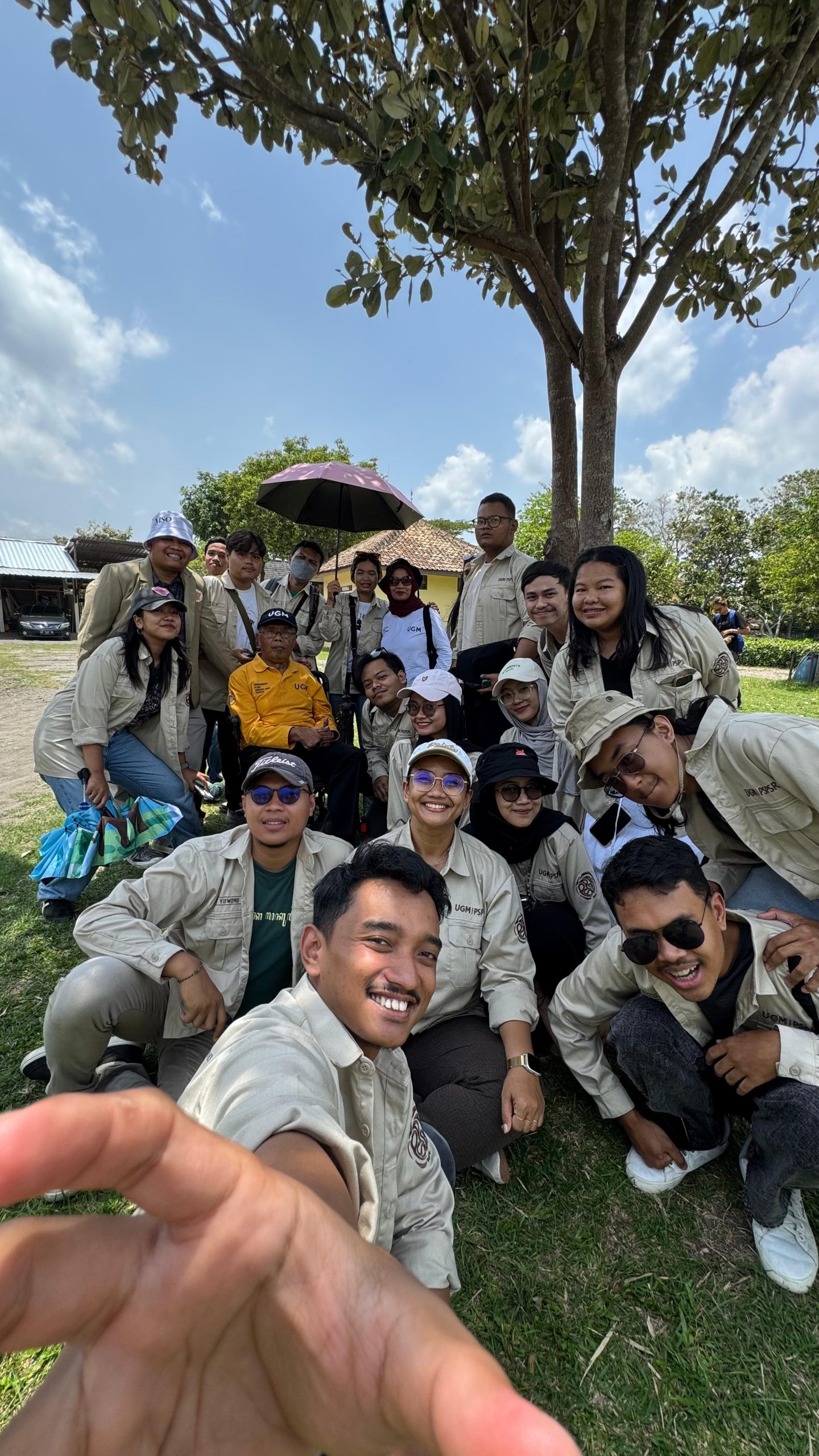
PSPSR UGM students embarked on a field study to some of Yogyakarta’s most iconic temples—Sambisari, Plaosan, Sojiwan, and Banyunibo. Guided by Prof. Dr. Timbul Haryono, MSc., an expert in archaeology and art history, the visit provided a rare opportunity to explore Indonesia’s cultural and artistic heritage up close.
During the study, students examined the intricate designs, symbolic reliefs, and spatial arrangements of the temples, revealing the depth of knowledge and skill possessed by ancient Javanese civilizations. Prof. Timbul emphasized that these temples are not merely relics of the past but are “living archives” that tell the stories of a vibrant Hindu-Buddhist era.
As students walked through the temple grounds, they learned how each structure reflected spiritual and cosmological beliefs, with carvings depicting folklore, moral lessons, and celestial order. Prof. Timbul explained that the artistic details were deliberately crafted to serve as messages for future generations, demonstrating the advanced understanding of architecture and storytelling at the time.
Beyond observing the artistry, the students were introduced to the broader cultural significance of these sites. Prof. Timbul underscored the role of the temples as symbols of cultural memory, connecting contemporary Indonesians to the legacy of their ancestors. He noted that protecting these monuments requires more than physical preservation—it demands a commitment to keeping their stories alive and relevant.
For the students, the field study served as a profound reminder of the importance of heritage in shaping national identity. They witnessed firsthand how the temples embody not just history, but also the enduring spirit of a civilization that contributed to the cultural richness of the world.
This initiative is part of UGM’s mission to bridge academic theory with hands-on exploration, fostering a deeper understanding of Indonesia’s historical and cultural narratives. Through activities like this, the university reaffirms its commitment to preserving the nation’s heritage while inspiring the next generation to appreciate and protect it. The series of activities in this iconic temple visit aligns with SDG goals 4 (Quality Education). (MRL)





